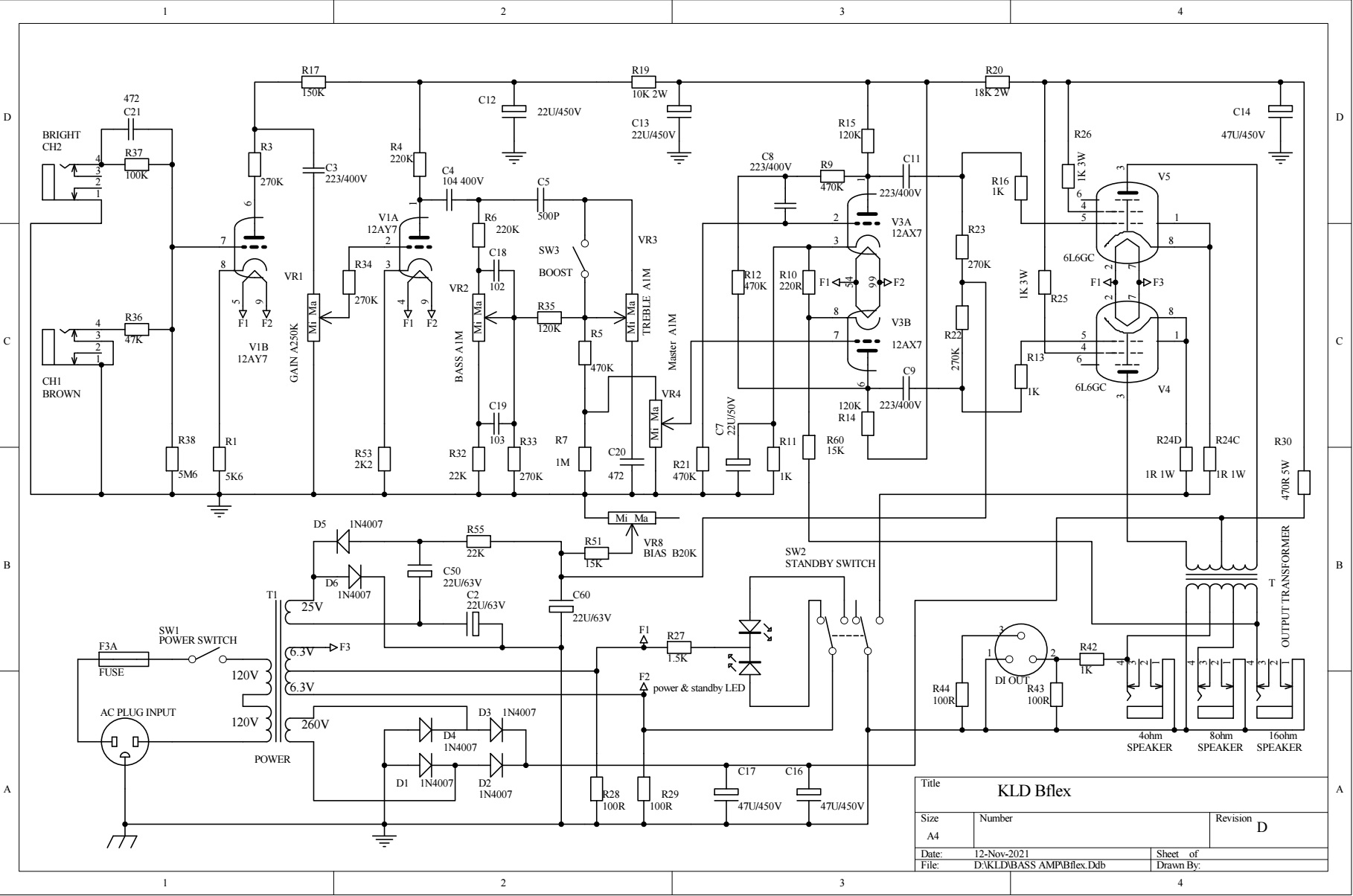BFLEX25 is low wattage tube bass amp, If you're playing small rooms, perhaps small gigs, or using PA support for your bass, then 20 W may be enough. But if you want to play large rooms, loud band, need to fill a space without relying on PA support, you might want more headroom.To reduce early breakup, below are some suggestions for more headroom:
- Increase preamp plate resistors R3 slightly (e.g. 270 kΩ to 330K kΩ) to lower gain.
- Raise cathode bypass caps on the first 12AX7 stage (e.g. 1 µF to 4.7 µF or remove completely) for less low-frequency boost and cleaner tone.
- Try lower-gain tube in V1:
- Swap 12AX7 to 12AT7 or 5751.
- Optional:Power Supply & Filtering (Advanced Modding)
Use higher B+ on preamp (if transformer margin allows, +10-15 V) to tighten response.
- Increasing filter capacitor values in the B+ supply (within safe limits) can stiffen the power section and reduce voltage sag. Example: if main filter is 22 µF, increasing to 68 µF or 100 µF can tighten low end and improve transient headroom.
- Ensure the rectifier and transformer can handle the extra inrush current.

Although the PF-20T doesn't need distortion , beacuse it already gives you a sweet natural breakup . At same, it pairs beautifully with good bass overdrive pedals if you want that extra grit or bite. Certainly, if you want get more vintage B-15 growl, you still conside below:
- Reduce cathode resistor R1 and R53 on V1 slightly (e.g. 5.6 kΩ to 3.3 kΩ).
- Lower bypass cap to 0.68 µF for mid boost and earlier distortion (Marshall-style trick).
- Add grid-stopper on V2 (e.g. 68 kΩ) to control high-end harshness during overdrive.
- Add a small 220 kΩ mixing resistor between stages to shape how hard V2 drives the output section.
- Reduce coupling caps C4 in preamp (e.g. 0.1 µF to 0.047 µF) to tighten bass.
- Increase negative feedback around power amp slightly (lower feedback resistor by 10-20%) for more damping.
- Loosen negative feedback (raise feedback resistor) for softer attack and earlier clipping.
- Replace modern coupling caps with paper-in-oil or Mallory 150 for warmer texture.
- Use arbon-composition resistors in signal path (optional, for subtle harmonic coloration).